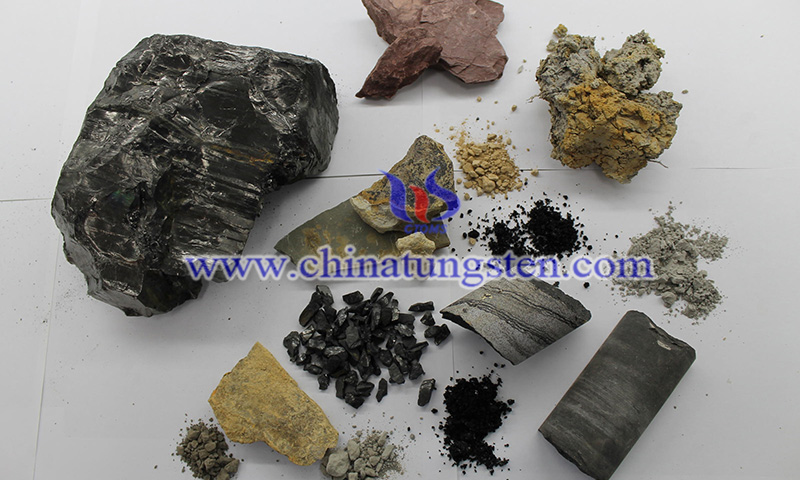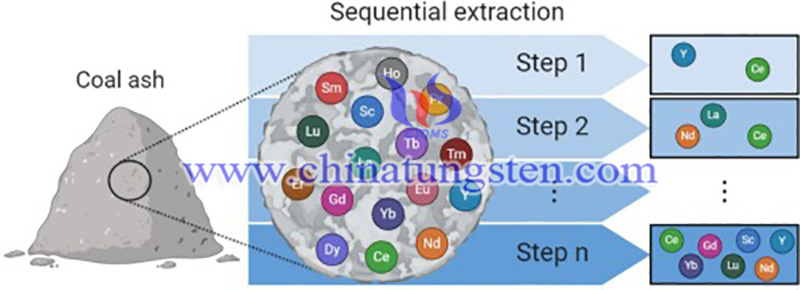Could Rare Earth Minerals Give Coal Countries A Second Life? -Ⅱ
- Details
- Category: Tungsten's News
- Published on Wednesday, 16 February 2022 16:05
Amid the energy transition, coal countries are seeking new ways to obtain rare earth minerals. Coal is by far one of the worst polluters on the planet. Pilot projects across North America are reducing the use of coal through new energy sources.
In the United States, the University of Kentucky, with the support of the federal National Energy Technology Laboratory, is vigorously pursuing a similar pilot project to extract rare earths from coal waste. Last year, the university reported up to 98 percent purity of rare earth oxides in pilot-scale tests on coal and its byproducts. The U.S. Department of Energy is funding similar pilot projects in Wyoming, West Virginia, Tennessee, North Dakota, and other states in hopes that unemployed coal workers will eventually find "good-paying jobs" in the clean economy, one senator said.

“Other mining sites may also have potential sources of rare earth recovery," said Charles Dumaresq, vice president of science and environmental stewardship for the Mining Association of Canada (MAC). “These include places where uranium and bauxite (used to produce alumina) are mined. Even the oil waste tailings ponds at Fort McMurray may contain rare earths."
“Economic factors are further impeding the gold rush to extract rare earths from waste materials such as coal," said Brendan Marshall, MAC's vice president for economic and northern affairs. “Canada does not have an existing market for rare earths, a pre-existing North American extraction or separation supply chain, or a manufacturing base for products such as permanent magnets. The key challenge in addressing these is how to extract these key minerals."
Canada has 7% of the world's rare earth resources and the tenth-largest reserves in the world. China is number one, and the United States has the eighth-largest reserves in the world.
In 2020, the Saskatchewan Research Council (SRC) announced a rare earth processing plant in Saskatoon, where the new plant will separate rare earth minerals from virgin ore mined in the northern part of the province and create midstream value-added processing that concentrates those metals, said Mike Crabtree, CEO of SRC.
One potential source of rare earths is monazite mined in the Als Lake area of northern Saskatchewan. says Crabtree, "One ton of monazite contains neodymium used to make rare earth magnets, which yield upwards of 80 per cent rare earths. By comparison, a ton of coal ash may contain a few kilograms."

However, mining rare earths in coal countries could draw strong opposition from aboriginal peoples. Last year, Greenland's Inuit Ataqatigiit party campaigned successfully to overturn a rare earth mining plan that would have produced uranium as a byproduct, raising concerns about radioactive contamination.
Rare earth mining may also provide employment and investment opportunities for First Nations. For example, in Canada's Northwest Territories, Yellowknives Dene, who owns Det'on Cho Nahanni Construction, is operating the Nechalacho Rare Earths Mining Project.
Rare earth minerals are one of the manufacturing materials of the future. However, the accelerating climate crisis underscores the need for a rapid transition to a green economy in coal countries. Whether through virgin mining, upcycled mining waste, or rare earth metals recovered from discarded retail products such as cell phones, the transition to ensure the world reaches net-zero carbon emissions will soon be upon us.
- Rare Earth Manufacturer & Supplier, Chinatungsten Online: www.chinatungsten.com
- Tungsten News & Prices of China Tungsten Industry Association: www.ctia.com.cn
- Molybdenum News & Price: news.molybdenum.com.cn
- Tel.: 86 592 5129696; Fax: 86 592 5129797; Email: sales@chinatungsten.com



 sales@chinatungsten.com
sales@chinatungsten.com